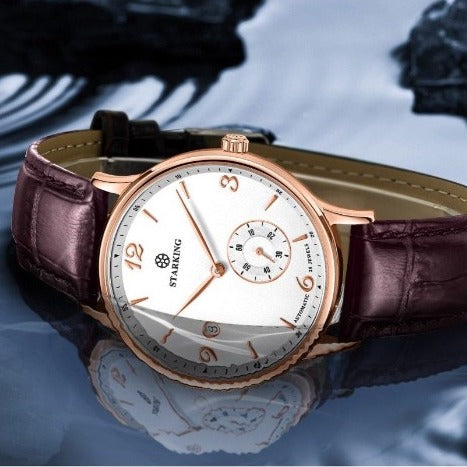
The Well-Made Watch: Water Resistance
Share

Watch internals do not do well with water. Water can cause corrosion and damage the movement to the point where the watch ceases to function. Knowing the water resistance of the watch is important in assessing the quality and protecting the watch throughout its lifetime. The higher the water resistance, the better.
Protection From Water
Watches can be designed to protect the internals from water in several different ways. Gaskets or O-rings made from rubber, Teflon or nylon can be placed where the watch parts come together. These O-rings can provide an air tight seal in places such as the case back to the case and the crown to the case. In addition to O-rings, screwed connections and glue or epoxy also improve water resistance. A case back that is screwed into the case and a crown that is screwed into the case (aka screw down crown) provide that extra water protection. Watch glue or epoxy are typically applied between the watch crystal and the case. The material hardens when dry and reinforces the seal between the crystal and case.

To note, over time and use, these different water protection devices can lose their ability to protect against water and need to be changed out or maintained to keep the same level of protection.
Watch Resistant Ratings
Water Resistance can be represented in three different units of measure: ATM or atmosphere, Bar (another word for atmosphere) or meter. One ATM or Bar is equal to 10 meters of static water pressure or the pressure of a body of water at rest. There are several different water resistant ratings. The most typical are 3 Bar (3 ATM / 30 Meters), 5 Bar (5 ATM / 50 Meters), 10 Bar (10 ATM / 100 Meters), 20 Bar (20 ATM / 200 Meters) and 30 Bar (30 ATM / 30 Meters).
Since these water resistance ratings are for static water pressure, you shouldn't assume you can submerge a watch at that depth and be safe. So what do these ratings really mean?
3 Bar: Safe for small splashes like rain and hand washing. Not safe for taking a shower or submerging in water.
5 Bar: Safe for minor submersion for short periods of time. Not safe for vigorous swimming, sitting in a jacuzzi or diving.
10 Bar: Safe for swimming, snorkeling, and water sports. Not safe for scuba diving.
20 Bar, 30 Bars and above: Safe for scuba diving

Quality and Water Resistance
Even though water resistance is not the only factor in measuring watch quality, it is a good indicator of what details are in the watch. The number of devices used to increase the water resistance increases the cost to fabricate the watch. So theoretically, the higher the water resistance, the higher the quality of the watch.
Look at water resistance in conjunction with the movement, case material and crystal material to round out your opinion when judging watch quality.


